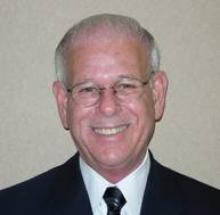The history of modern medicine in America is said to have begun when the pilgrims arrived here from England.
There were two physicians on the Mayflower. One was Myles Standish, the commander of the Mayflower. Dr. Standish was described as a "little man with a fierce temper." He had no formal medical education; his medical knowledge was achieved by observing and studying with other English physicians. Another physician among the pilgrims was Dr. Samuel Fuller. Although we do not know much about Dr. Fuller’s education or his skills as a physician, we do know that he practiced both as a physician and surgeon. As early America developed, doctors were scarce. Doctors charged a "simple fee" for their services, but treatment by physicians was most often reserved for the wealthiest colonists.
Prior to the 1800s, medicine in the United States was carried out mostly in private homes and occasionally in a private doctor’s office. On the western frontier, doctors traveled by foot or horseback to the patient’s home. The physician was limited to the number of tools and drugs he could fit into a handheld case or saddlebag. Early American physicians were expected to treat everything, including gunshot wounds, toothaches, and sick livestock. Throughout the 19th century, surgery was also performed in the home. As physicians do today, 19th-century doctors usually charged patients for their services; however, they were often paid not by monetary reimbursements, but rather "in kind" with whatever produce, services, or goods were available to the patient. That system was soon to change.
By the end of the 19th and early 20th centuries, the population shifted from rural environments to urban centers. Industrialization in America was associated with changes in the economy and family dynamics. As the Industrial Revolution developed, the household economy depended upon the primary wage earner’s continued health. By the 1920s, hospitals were becoming centers for surgery and more advanced medical care.
However, by the end of the 1920s, families began to demand greater access to medical services, the cost of care increased, and the need arose for a type of reimbursement other than the traditional methods of payment in preindustrial America. But at the same time, money markets tightened, and people started to lose their jobs when Black Tuesday heralded the Great Depression on Oct. 29, 1929.
The concept of prepaid hospital insurance grew out of the Great Depression. Money was scarce in America. In addition to individuals’ suffering the hardships of lost jobs and lost income, hospitals became economically unstable. At the same time, the demand for hospital care increased with a rise in migration to urban areas for work. As the need for hospital services escalated, an alternative payment system for medical services emerged that would ultimately revolutionize the health care industry.
This new payment innovation, which many believe was the beginning of modern day prepaid health insurance, had its origin at Baylor University Hospital (now Baylor University Medical Center at Dallas). In 1929, under the Baylor Plan, school teachers were to pay 50 cents per month in exchange for the guarantee that they could receive medical services for up to 21 days of any 1 year. Similar hospital plans began to emerge nationwide. The Baylor Plan became the precursor for Blue Cross Insurance. The name Blue Cross was adopted in 1934, and by 1935, there were 15 Blue Cross plans in 11 states. Blue Shield emerged in 1939 when the California Medical Association started the California Physician’s Service, which was the first prepayment plan to cover physician fees. These physician-sponsored plans were combined into Blue Shield in 1946. Blue Cross and Blue Shield merged into one company in 1971.
After America entered World War II in 1941, there was a labor shortage, yet companies needed to recruit employees. This demand led to a wage war. The federal government imposed wartime wage and price controls under the 1942 Stabilization Act. With wage controls in place, employers began to compete for employees through health insurance packages. The companies’ health care expenses were exempt from income tax, and the resulting trend was largely responsible for the workplace’s present role as the main supplier of health insurance.
By the 1960s, the private health insurance system was well established. America entered into a prosperous postwar economy. In addition to an increase in physician reimbursements, health care expenses also began to escalate. At the same time, the political atmosphere became favorable toward ensuring medical care for senior Americans who were no longer working and did not have employment-based coverage. President Johnson signed Medicare into law on July 30, 1965, at the Truman Library in Independence, Mo. Former President Harry Truman received the first Medicare card.


